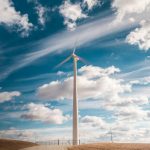An increasing number of companies recognize the benefits of investing in sustainable energy. This trend is driven by the pursuit of decarbonization and climate neutrality goals and as a response to the global energy crisis. This moment revealed the instability of traditional energy sources and the necessity to move towards energy transition. Companies are increasingly considering integrating solar energy in their efforts to secure reliable energy sources for their operations. However, making such decisions requires trust in the efficient execution of projects. When a project is entrusted to a team of experts, investors need assurance that all phases are carefully planned, allowing them to focus on achieving their business objectives.
SAKURA ENERGY has decided to integrate sustainable energy into its operations. This decision marks a significant step toward reducing the company’s environmental footprint and improving energy efficiency. To realize their ambitious idea, they found a reliable partner in MT-KOMEX, a company with extensive experience constructing solar power plants. MT-KOMEX offers comprehensive support at all project stages, from initial analysis and design to implementation and maintenance. The company’s expert team oversees every aspect of the project, ensuring compliance with the latest standards and regulations in the field of renewable energy.
The solar power plant Sakura Park 1, located on the rooftop of a building in New Belgrade, will include 304 bifacial photovoltaic panels manufactured by Luxor Solar, chosen for their high quality and efficiency. Bifacial solar panels are designed to generate more electricity by capturing sunlight reflected off the surface on which they are installed.
IN FOCUS:
- Charging Infrastructure as the Foundation of E-Mobility
- Ecological Vision – Good Health of People and Nature
- Green Projects – TENT A Gets A Solar Power Plant
The panels will be installed in landscape orientation on flat rooftop surfaces. They will be arranged in two rows facing east-west, with a tilt angle of 9°. The horizontal spacing between the panels is 22 millimeters, while the vertical spacing is approximately 140 millimeters. Each panel measures 2,279 x 1,134 x 30 millimeters and weighs 32.7 kilograms.

The total capacity of the photovoltaic generators is 173.28 kWp DC. Four alternating current inverters, each with an output power of 40 kW and manufactured by Huawei, are planned for connection to the grid. The total output power of all inverters is 160 kW, and they are connected via AC cables to a single AC distribution panel within the building. The electricity generated by this solar power plant will be used to power the building’s internal systems, with partial excess energy fed into the distribution grid. The estimated annual electricity production from the solar power plant is 175,221.00 kWh, demonstrating the efficiency and capacity of the project.
The adoption of solar energy plays a significant role in combating climate change by reducing carbon dioxide emissions, one of the main greenhouse gases contributing to global warming. Regarding the solar power plant Sakura Park 1, the expected annual CO2 savings amount to 82,317.25 kilograms, highlighting this project’s environmental benefits. These benefits include achieving climate goals, reducing air pollution, and improving quality of life.
Prepared by Katarina Vuinac
The story was published in the Energy portal Magazine ECOLOGICAL TRANSPORT





